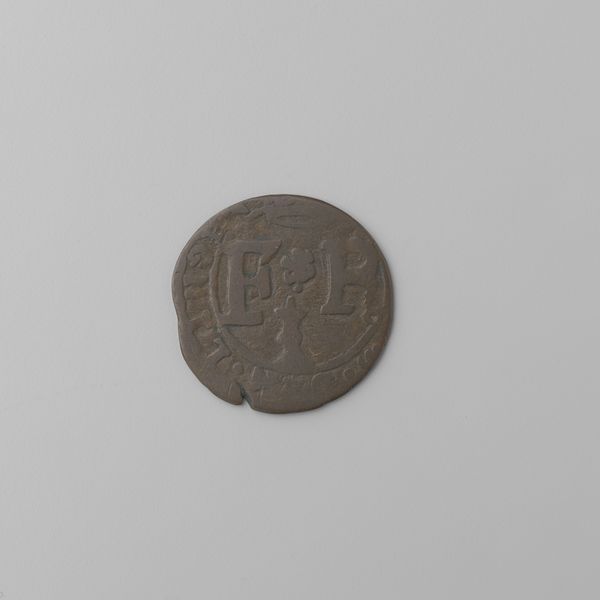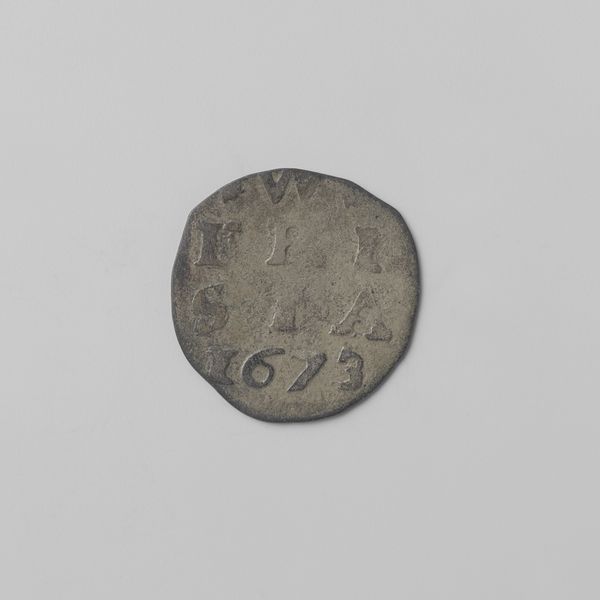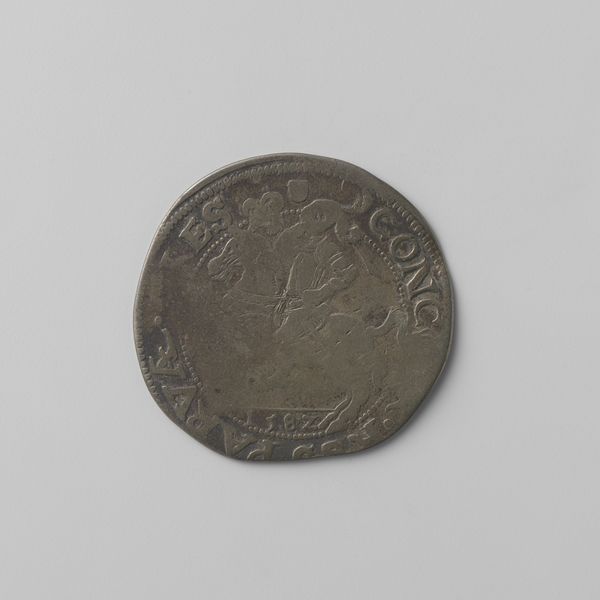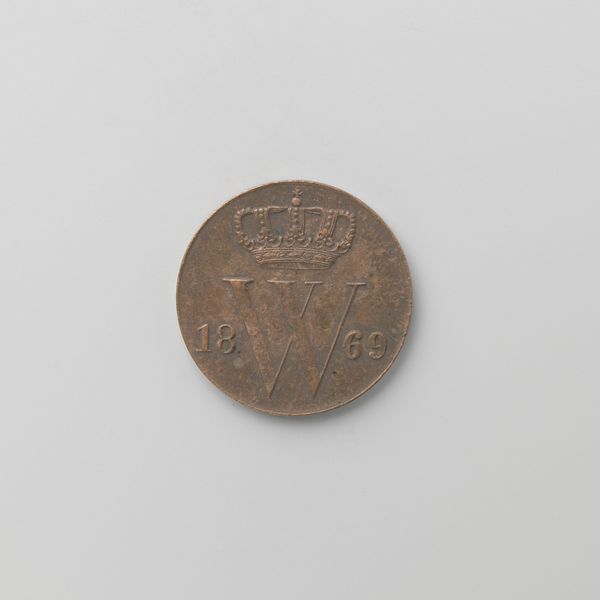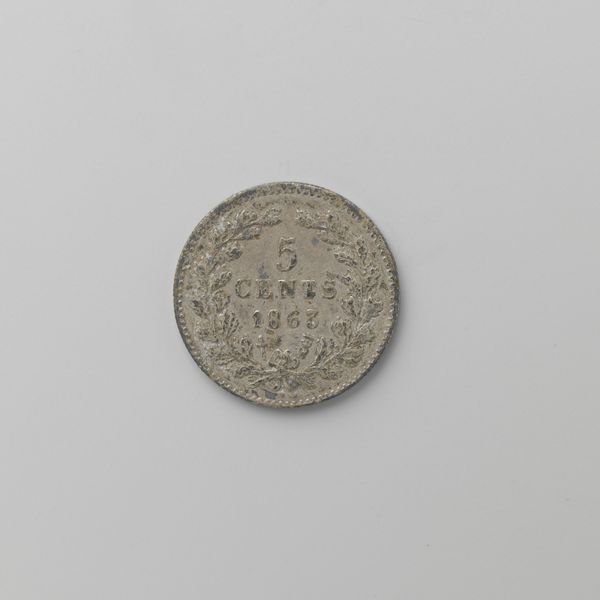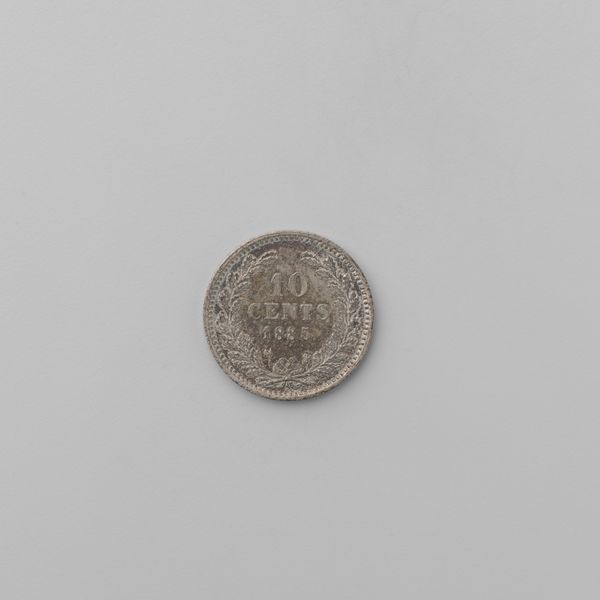
metal
#
metal
#
ancient-mediterranean
Dimensions: diameter 1.5 cm, weight 0.87 gr
Copyright: Rijks Museum: Open Domain
This is a five-cent coin designed by Willem I, King of the Netherlands, in 1828. But in what ways can we consider this functional object to be a work of art? As an object circulating in Dutch society, it acted as a sign of wealth and power. The image creates meaning through visual codes: The crowned 'W' refers directly to the monarch, connecting economic activity with political authority. This coin was made during the period of the United Kingdom of the Netherlands, a time of economic and political change, as the country transitioned from the Napoleonic era into a new period of industrial development. Coins such as this also provide insight into the history of institutions like the Royal Dutch Mint, which was responsible for producing currency and regulating its value. The historian can use documents from the Mint, along with economic surveys and political records, to understand the complex interplay of factors behind this humble object.
Comments
No comments
Be the first to comment and join the conversation on the ultimate creative platform.





